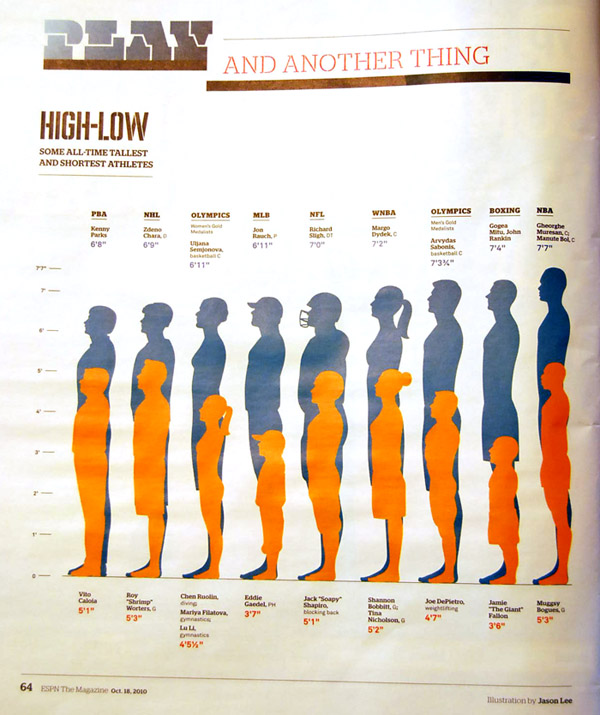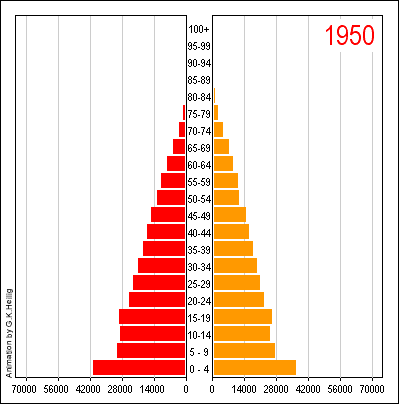
What Works
Imagine looking at this information in a table. It would get the job done, but it wouldn’t have as much visual legibility as this graphic does. One thing I like about the graphic is that the illustrator was not impeded by the fact that sometimes there were ties for tallest or shortest. He just kept to the same paired down one tallest/one shortest depiction.
What needs work
I would have loved to see some indication of mean height. Does it fall in the middle, does the mean cluster towards the top? Does it cluster towards the bottom for some sports (like women’s gymnastics)? Even more interesting would have been changes over time. The human population has been getting taller on average so one would expect that athletes are also getting taller. But maybe some are not, like those in sports where the age of professionals is dropping (ahem, women’s gymnastics).
My apologies for the quality of the image – the scanner is refusing service this morning.
References
Lee, Jason. [illustration] (2010, 18 October) “High-Low: some all-time tallest and shortest athletes” in ESPN The Magazine. p. 64.
Macur, Juliet. (2008, 9 August) The Teeny Tiny Matter of Age for China’s Gymnasts in The New York Times: Olympics 2008 Supplement.
Comments Closed
Regular readers, I had to close the comments on this post because I was getting spam comments faster than I could delete them (online gambling, mostly). If you are keen on commenting, email me and I will find a way to make sure your comments are heard. Wonder what the key word was that made this particular post such a spam magnet? Athlete? ESPN? Who can say.

